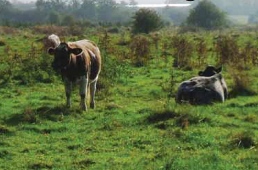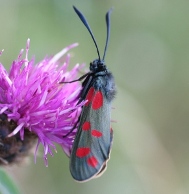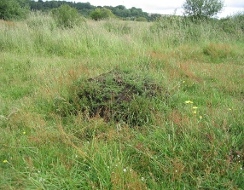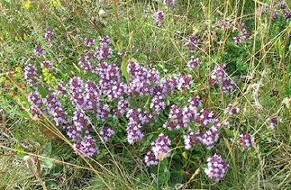Croxley Common Moor is a valuable site for nature conservation. It is a Site of Special Scientific Interest (SSSI) (see its official designation at SSSI) and a Local Nature Reserve. It is legally protected for its diverse plant communities, notably unimproved (no fertilisers have ever been added) acid and neutral grassland. The site also contains a rich variety of birds and insects. As a protected area Three Rivers District Council is under a legal obligation to the government, through Natural England to conserve the Moor.

Cows grazing on the moor
The open character and special plants of Croxley Common Moor are a result of centuries of commoners grazing livestock. In the past this form of management prevented trees and scrub from developing on the site. In the last 50 years however, cattle grazing on the Moor became less common causing dense scrub to develop. Today Croxley Common Moor is securely fenced meaning cattle can roam the whole site. Approximately 30 cows graze the Moor between June and October when ground conditions are drier and they consume much of the grass and low, palatable vegetation. They will not have a pronounced impact on mature, woody scrub although they will eat the young re-growth from newly cut stumps. Today, despite the regular grazing mature scrub still exists on areas of important grassland.
Scattered scrub on the Moor is desirable habitat for birds, providing nesting and food sites and trees with which to display from. It also provides important microclimate conditions (warmer, drier) for insects and grass snakes. However, too much scrub threatens the open character of the Moor, shading out the finer grasses and important flowering plants that the Moor is protected for. If the scrub is not removed the Moor would become secondary woodland with the loss of these important and rare plant communities. This process of woodland development can be clearly seen around the perimeter of the Moor.

A Burnet Moth on Knapweed
In recent years good management of Croxley Common Moor by Three Rivers District Council, the Countryside Management Service and the volunteers has promoted the rich variety of grassland plant species on the site: including Petty Whin, Fen, Heath and Lady's Bedstraw, Large Thyme, Purging Flax and Dyers Greenweed. A 2015 survey of the Moor's vegetation can be downloaded here [pdf, 2.7Mb]. Croxley Common Moor has also been noted as being of particular value for invertebrates. Surveys have recorded a number of uncommon species including the rare spider Enoplognognatha latimana, the beetles Stenus niveus and Apion rubiginosum and the scarce micro-moth Caloptilia phasianipennella. The presence of numerous ant hills across the site are indicative of the undisturbed nature of the grassland and are important for plant species such as Large Thyme and Purging Flax.
A survey of birds found on the Moor in April to July 2016 can be downloaded here. Yearly volunteer surveys since 2013 have confirmed the presence of glow worms. Our 2019 bat walk confirmed the presence of Soprano Pipistrelles, Daubenton's, and Noctules. (If you see a bat needing help, please contact the Herts. & Middx. Bat Helpline on 07517 123200.) One night of moth trapping in July 2019 recorded the presence of 56 macro species and 50 micro species: notable finds included Agonopterix assimilella, Trifurcula immundella, Leucoptera spartifoliella, Caryocolum fraternella and Sophronia semicostella - the full list is .


Left: Meadow Ant hill. Right: Large Thyme
 Croxley Common Moor
Croxley Common Moor